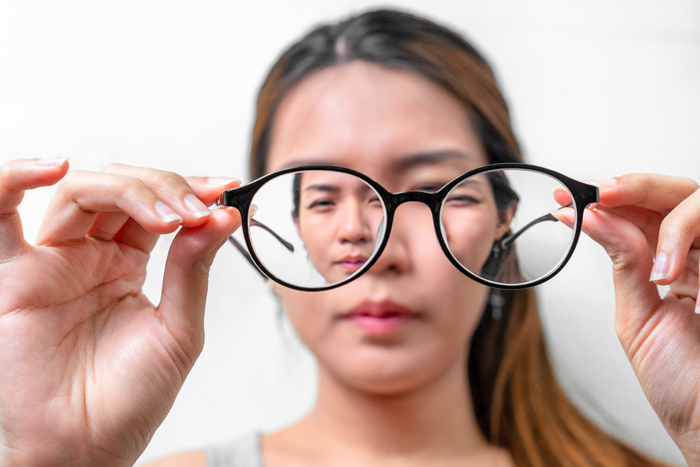Squint Eye Treatment in Tardeo, Mumbai
Squint, commonly known as strabismus, is an eye disorder prevalent in India, marked by the misalignment of a person’s eyes.
Read on to find out all about squint, its causes, diagnosis, and treatment.

What Is a Squint Eye?
Squint eye is a disorder in which a person’s eyes are not correctly aligned. One of the eyes tends to look straight in this condition, while the other moves upwards, downwards, inwards, or outwards.
The misalignment of eyes can be permanent or temporary. It usually seems to affect younger individuals but is seen in adults also.
What Are the Symptoms of Squint Eye?
Some of the signs and symptoms of a squint eye are:
- Either one or both eyes point in different directions.
- The person has a defective vision in one or both eyes.
- If exposed to bright sunlight, the person feels uncomfortable and has to close one of their eyes.
- Tilting one’s head in a particular direction to be able to use both eyes.
- Difficulty visualizing or experiencing double vision.
What Are the Causes of Squint Eye?
Concrete reasons for the disorder are not established yet. But there are some causes listed for its occurrence:
- A congenital deformity.
- Genetic, i.e., running in the family history.
- The nerves in the eye muscles are weak.
- Due to long-sightedness, injury, or illness.
- Your vision is seriously affected by other conditions like myopia, hypermetropia, corneal scars, cataract, refractive errors, etc.
When to See a Doctor?
Your physician can recommend you to an ophthalmologist for timely treatment if you are experiencing severe eye conditions like excessive tearing, blocked, reduced, or double vision, misaligned eyes, etc.
You should disclose your medical history to the ophthalmology doctor so that the treatment can become more manageable. Also, you should notify the physician if you are on any medication because they may affect the treatment of squint eyes.
Request an appointment at Apollo Spectra Hospitals, Tardeo, Mumbai.
Call 1860 500 2244 to book an appointment.
How Is Squint Diagnosed?
Four practical tests are conducted to check if you have squint eyes:
- The light reflex test
The light is directed in the child’s eyes to check if the reflection of the light in both eyes is identical or not.
- The red reflex test
An ophthalmoscope is directed in the child’s eyes to visualize whether the red reflexes in both eyes are aligned or not.
- The cover test
In this, one of the eyes is covered, and the other is closely observed. If the covered eye is normal, the uncovered eye will move from the deviated position to normal, pointing out the strabismus.
- The uncover test
In this test, one of the eyes is covered for 5 seconds, and then its movement is observed. The defective eye will drift from its position when covered and return to normal when uncovered, pointing out strabismus.
Treatment for Squint
It is good to have prompt treatment since it will reduce the risk of developing any other severe eye condition. Also, the treatment is likely to be more effective if the patient is younger (preferably around two years). Timely treatment can protect from peripheral loss of vision.
The type of treatment the squint specialist might recommend depends upon different situations:
- Spectacles are prescribed if the cause of the squint is hypermetropia.
- If a patient has only one squint eye, an eye patch is given to cover the normal eye so that the squinted eye can work better.
- Surgery is considered after checking the patient’s recovery and improvement by wearing glasses or patching therapy.
- In surgery, muscles in the incompetent eye or both eyes are removed from their original position. They are placed in a different spot to fix the deviation and regain visual focus.
- Doctors also suggest a standard “home-based pencil pushup” exercise for the squint eye to strengthen eye muscles.
Conclusion
Schedule an eye checkup once in six months or a year to ensure that your eye health is up to the mark. Also, with regular examinations, the ophthalmologist can detect any weakness or vision changes beforehand and start the treatment on time.
All the problems are not solvable by surgery. Plus, due to the complex system, the surgery might partially or entirely cure the condition or its effects.
If not treated on time, squint eyes can further lead to amblyopia, or “lazy eye,” in which the brain ignores input from one eye to avoid double vision.
Since the misalignment of eyes is visible to naked eyes, it can make the person self-conscious of their appearance and lower their morale.
Symptoms
Our Doctors
DR. NEETA SHARMA
MBBS, DO (Ophthal), ...
| Experience | : | 31 Yeras Experience |
|---|---|---|
| Speciality | : | Ophthalmology... | Location | : | Chembur |
| Timings | : | Thur, Fri : 10:00 AM... |
DR. PALLAVI BIPTE
MBBS, MS (Ophthalmol...
| Experience | : | 21 Yeras Experience |
|---|---|---|
| Speciality | : | Ophthalmology... | Location | : | Chembur |
| Timings | : | Mon - Wed, Fri & Sat... |
DR. NUSRAT BUKHARI
MBBS, DOMS, Fellowsh...
| Experience | : | 12 Yeras Experience |
|---|---|---|
| Speciality | : | Ophthalmology... | Location | : | Tardeo |
| Timings | : | Mon - Fri : 9:00 AM ... |
Our Top Specialities
NOTICE BOARD
CONTACT US
CONTACT US
 Book Appointment
Book Appointment





.svg)
.svg)
.svg)
.svg)








